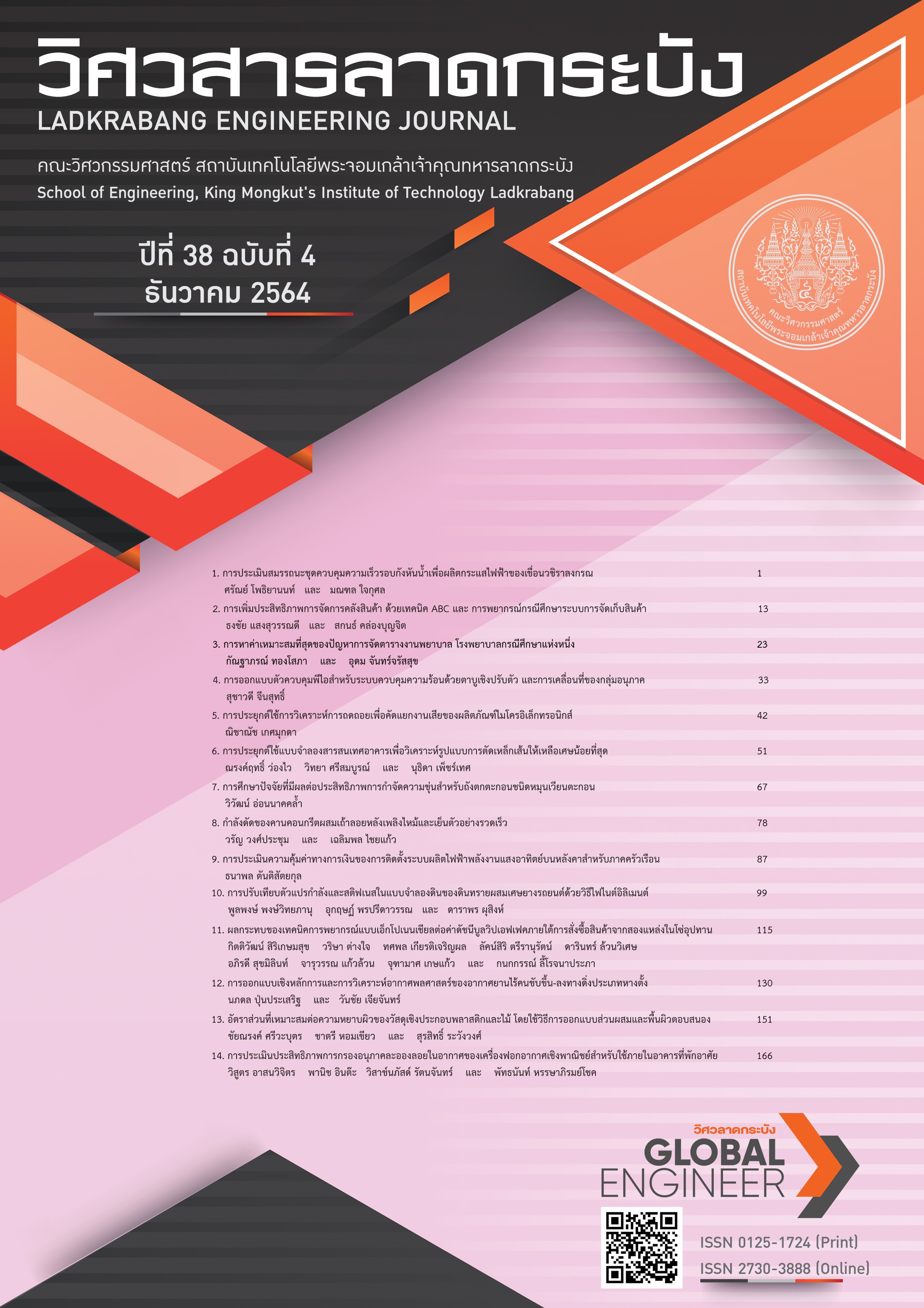Impact of Exponential Smoothing Forecasting Technique on Bullwhip Effect Index Under a Dual-Supplier Supply Chain System
Keywords:
Supply Chain, Bullwhip Effect, Dual-supplier System, Order-up-to Inventory, Exponential Smoothing Forecasting TechniqueAbstract
This research objective is to study and simulate the bullwhip effect under a dual-supplier system. The bullwhip effect is an adverse phenomenon in the supply chain in which the demand variance at upstream members is higher than the demand variance at downstream members. A dual-supplier system consists of a sub-supplier, two suppliers and a retailer. In this research, all members use the exponential smoothing forecasting technique and the order-up-to inventory policy. Also, it is assumed that the incoming demand process for the retailer is the first order autoregressive (AR(1)) model. In the important scope of this research, the lead times from two suppliers to a retailer are equal. After analysis, it is found that the factor of the proportion of the supplier's order quantity to the total order quantity issued by the retailer does not affect the bullwhip effect index. Hence, the bullwhip effect values between the dual-supplier and single-supplier models are equal. In addition, the bullwhip effects vary according to the smoothing factor of the exponential smoothing forecasting technique; and the first-order autocorrelation coefficient has an effect on the bullwhip effects. Finally, purchasing and supply chain managers will gain and increase a clear understanding of such behavior matters in the dual-supplier or single-supplier systems in the supply chain from this current research.
References
L. C. Alwan, J. J. Liu and D. Q. Yao, “Stochastic characterization of upstream demand process in a supply chain,” IIE Transaction, vol. 35, pp. 207–219, 2003.
H. Lee, V. Padmanabhan and S. Whang, “Information distortion in a supply chain: the bullwhip effect,” Management Science, vol. 43, no. 4, pp. 546–558, 1997, doi: 10.1287/mnsc.43.4.546.
H. Lee, V. Padmanabhan and S. Whang, “The bullwhip effect in supply chains”, Sloan Management Review, vol. 38, no. 3, pp. 93–102, 1997.
F. Chen, J. K. Ryan and D. Simchi-Levi, “The impact of exponential smoothing forecasts on the bullwhip effect,” Naval Research Logistics, vol. 47, no. 4, pp.269–286, 2000, doi: 10.1002/(SICI)1520-6750(200006)47:4<269::AID-NAV1>3.0.CO;2-Q.
X. Zhang, “The impact of forecasting methods on the bullwhip effect,” International Journal of Production Economics, vol. 88, no. 1, pp.15–27, 2004, doi: 10.1016/S0925-5273(03)00128-2.
J. L. Wang, J. H. Kuo, S. Chou and S. Z. Wang, “A comparison of bullwhip effect in a single-stage supply chain for autocorrelated demands when using Correct, MA, and EWMA methods,” Expert Systems with Applications, vol. 37, pp.4726–4736, 2010, doi: 10.1016/j.eswa.2009.09.071.
L. Hong, and W. Ping, “Bullwhip effect analysis in supply chain for demand forecasting technology,” Systems Engineering – Theory & Practice, vol.27, no. 7, pp.26–33, 2007, doi: 10.1016/S1874-8651(08)60044-7.
K. Sirikasemsuk and H.T. Luong, “Measure of bullwhip effect – a dual sourcing model”, International Journal of Operational Research, vol. 20, no. 4, pp. 396–426, 2014, doi: . 10.1504/IJOR.2014.063149
T. Hosoda and S.M. Disney, “The role of an ordering policy as an inventory and cost controller,” in Logistics Research Network Annual Conference, Dublin, Ireland, September 8–10, 2004.
H.T. Luong, “Measure of bullwhip effect in supply chain with autoregressive demand process”, European Journal of Operational Research, vol. 180, no. 3, pp. 1086–1097, 2007, 10.1016/j.ejor.2006.02.050.
Downloads
Published
How to Cite
Issue
Section
License
Copyright (c) 2021 Faculty of Engineering, King Mongkut’s Institute of Technology Ladkrabang

This work is licensed under a Creative Commons Attribution-NonCommercial-NoDerivatives 4.0 International License.
The published articles are copyrighted by the School of Engineering, King Mongkut's Institute of Technology Ladkrabang.
The statements contained in each article in this academic journal are the personal opinions of each author and are not related to King Mongkut's Institute of Technology Ladkrabang and other faculty members in the institute.
Responsibility for all elements of each article belongs to each author; If there are any mistakes, each author is solely responsible for his own articles.






